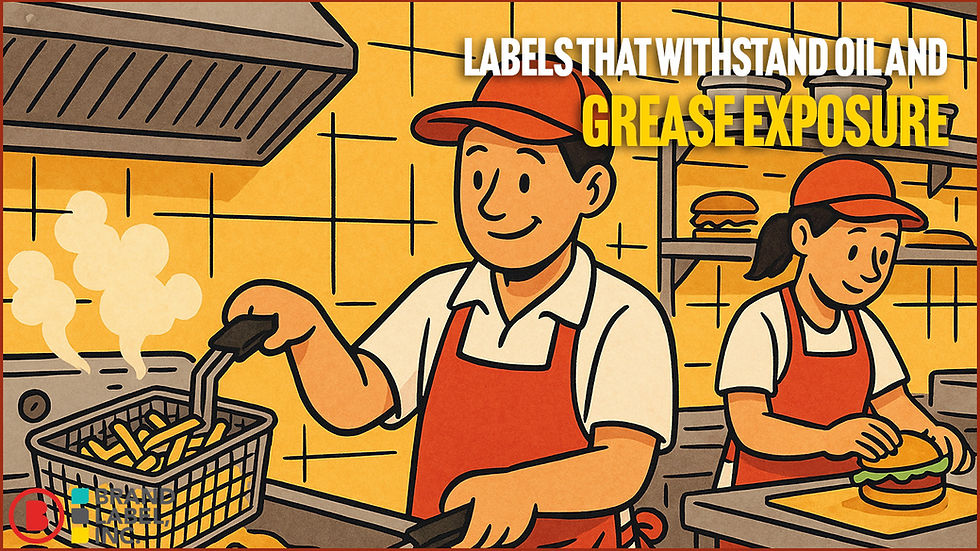The Importance of High-Humidity-Resistant Labels in Various Industries
- Barrett Matlock

- Aug 15
- 2 min read
Updated: Oct 7
In industries ranging from food and beverage to pharmaceuticals and marine equipment, labels are more than just decorative—they are vital tools for communication, safety, and brand identity. In high-humidity environments, however, labels face unique challenges that can compromise their readability, adhesion, and overall performance. Ensuring that labels are designed and manufactured to withstand these conditions is essential for both regulatory compliance and customer satisfaction.
The Challenges of High-Humidity Environments
Moisture is one of the most common threats to label integrity. Prolonged exposure to humidity can cause:
Ink smudging or fading, making important text or safety information illegible.
Adhesive failure, leading to peeling or complete detachment.
Material warping or bubbling, which can distort barcodes, QR codes, and other scannable elements.
These issues can disrupt product traceability, create compliance risks, and negatively impact brand perception.
Key Features of High-Humidity-Resistant Labels
To perform effectively in moisture-rich environments, labels must incorporate specialized materials and printing techniques:
Moisture-resistant substrates such as polypropylene, polyester, or vinyl that won’t absorb water.
Weatherproof and UV-stable inks to prevent smearing and fading over time.
High-tack adhesives formulated to maintain grip on various surfaces, even when wet or exposed to temperature fluctuations.
Protective laminates or coatings to add an extra barrier against water, abrasion, and chemical exposure.
Benefits for Businesses and Consumers
Investing in humidity-resistant labels ensures:
Consistent brand presentation—logos, colors, and design remain sharp and intact.
Regulatory compliance—labels retain required safety warnings and product information.
Operational efficiency—scannable codes remain functional for inventory and logistics tracking.
Customer trust—consumers can rely on accurate information throughout a product’s lifecycle.
Industry Applications
High-humidity-resistant labels are indispensable for:
Beverage packaging, where condensation forms during cold storage and handling.
Marine equipment and outdoor products that face constant moisture exposure.
Pharmaceuticals and medical devices stored in controlled but humid environments.
Food packaging, particularly in refrigerated or frozen goods where defrost cycles cause condensation.
Conclusion
In conclusion, high-humidity-resistant labels play a crucial role in ensuring that products maintain their integrity and compliance in challenging environments. By investing in these specialized labels, businesses can enhance their brand image, ensure regulatory compliance, and build trust with consumers.
This article is purely for educational purposes.




Comments